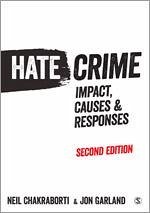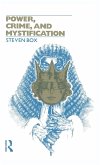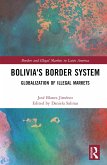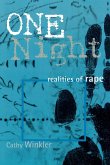Andere Kunden interessierten sich auch für
Produktdetails
- Verlag: Sage Publications
- 2nd edition
- Seitenzahl: 208
- Erscheinungstermin: 1. Mai 2015
- Englisch
- Abmessung: 226mm x 150mm x 8mm
- Gewicht: 181g
- ISBN-13: 9781446272503
- ISBN-10: 1446272508
- Artikelnr.: 42029663
Hinweis: Dieser Artikel kann nur an eine deutsche Lieferadresse ausgeliefert werden.
- Libri GmbH
- Europaallee 1
- 36244 Bad Hersfeld
- gpsr@libri.de
Neil Chakraborti is a Professor of Criminology at the University of Leicester, Director of the Leicester Centre for Hate Studies and an Adjunct Professor at the University of Ontario. He has published widely within the field of hate crime, and his books include Hate Crime: Impact, Causes and Responses (Sage, 2nd edition 2015; 1st edition 2009 with Jon Garland) Responding to Hate Crime: The Case for Connecting Policy and Research (2014, with Jon Garland); Islamophobia, Victimisation and the Veil (2014 with Irene Zempi); Hate Crime: Concepts, Policy, Future Directions (2010); and Rural Racism (2004 with Jon Garland). Neil conducts ongoing research in the field of hate studies, and was recently commissioned by the Equality and Human Rights Commission to investigate problems of under-reporting amongst lesbian, gay, bi and trans victims of hate crime. Prior to this he has led a series of funded research projects, including the ESRC-funded Leicester Hate Crime Project and a range of police- and local authority-funded studies of racism, victimisation and targeted hostility. In 2012 he was appointed as a Commissioner on the first-ever inquiry into sex in prisons within England and Wales, established by the Howard League for Penal Reform. He sits on the editorial boards of the British Journal of Criminology and Palgrave Communications, and is Chair of Research on the Board of Trustees for the Howard League for Penal Reform.
Chapter One: Understanding Hate Crime
Chapter Two: Racist Hate Crime
Chapter Three: Religiously Motivated Hate Crime
Chapter Four: Homophobic Hate Crime
Chapter Five: Transphobic Hate Crime
Chapter Six: Disablist Hate Crime
Chapter Seven: Vulnerability, 'Difference' and Gendered Violence
Chapter Eight: Perpetrators of Hate Crime
Chapter Nine: Responding to Hate Crime
Chapter Ten: International Perspectives on Hate Crime
Chapter Eleven: Conclusions and Future Directions
Chapter One: Understanding Hate Crime
Chapter Two: Racist Hate Crime
Chapter Three: Religiously Motivated Hate Crime
Chapter Four: Homophobic Hate Crime
Chapter Five: Transphobic Hate Crime
Chapter Six: Disablist Hate Crime
Chapter Seven: Vulnerability, 'Difference' and Gendered Violence
Chapter Eight: Perpetrators of Hate Crime
Chapter Nine: Responding to Hate Crime
Chapter Ten: International Perspectives on Hate Crime
Chapter Eleven: Conclusions and Future Directions
Chapter One: Understanding Hate Crime
Chapter Two: Racist Hate Crime
Chapter Three: Religiously Motivated Hate Crime
Chapter Four: Homophobic Hate Crime
Chapter Five: Transphobic Hate Crime
Chapter Six: Disablist Hate Crime
Chapter Seven: Vulnerability, 'Difference' and Gendered Violence
Chapter Eight: Perpetrators of Hate Crime
Chapter Nine: Responding to Hate Crime
Chapter Ten: International Perspectives on Hate Crime
Chapter Eleven: Conclusions and Future Directions
Chapter One: Understanding Hate Crime
Chapter Two: Racist Hate Crime
Chapter Three: Religiously Motivated Hate Crime
Chapter Four: Homophobic Hate Crime
Chapter Five: Transphobic Hate Crime
Chapter Six: Disablist Hate Crime
Chapter Seven: Vulnerability, 'Difference' and Gendered Violence
Chapter Eight: Perpetrators of Hate Crime
Chapter Nine: Responding to Hate Crime
Chapter Ten: International Perspectives on Hate Crime
Chapter Eleven: Conclusions and Future Directions
In this second edition of Hate Crime, Chakraborti and Garland broaden the scope of their analysis to thoughtfully reflect on dramatic changes in the realms of theory, research and policy that have characterized the field in the intervening 6 years since the first edition. They draw attention to our increased awareness of the complexity and ambiguity of hate crime, challenging readers to question many taken for granted assumptions of previous scholarship. This thoroughly researched and accessible text deftly captures the contexts and consequences of hate crime, giving due consideration to both victims and offenders, as well as the relationships between them. What is especially welcome is the weight given to "ways forward." The authors' emphasis on policy innovations within and beyond the UK will undoubtedly shape the scholarly and practical discourses around how we confront hate crime globally. Dr. Barbara Perry








